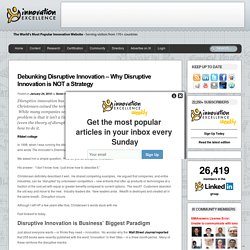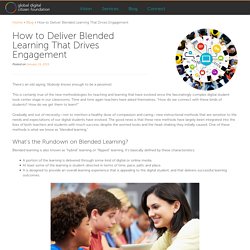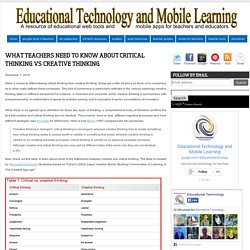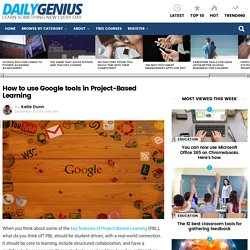

Readytoblend. Debunking Disruptive Innovation – Why Disruptive Innovation is NOT a Strategy. Disruptive innovation has become business’ biggest paradigm.

Harvard’s Clayton Christensen coined the term and the New Yorker’s Jill Lapore recently tore it down. While many companies scramble to create disruptive innovation strategies, the problem is that it isn’t a linear process or methodology. No single strategy or theory (even the theory of disruptive innovation itself) has captured how it really works or how to do it. In 1998, when I was running the strategy group at HP, we invited Clayton Christensen, the iconic Harvard professor who wrote The Innovator’s Dilemma and coined the term “disruptive innovation,” to come speak to us.
We asked him a simple question, “How do you do disruptive innovation?” His answer: “I don’t know how, I just know how to describe it.” Christensen definitely described it well. Although I left HP a few years after that, Christensen’s words stuck with me. Fast forward to today. Disruptive Innovation is Business’ Biggest Paradigm Old Idea, New Language Wait! Nine Things Educators Need to Know About the Brain.
Via Greater Good The human brain wasn’t designed for industrial education.

It was shaped over millions of years of sequential adaptation in response to ever-changing environmental demands. Over time, brains grew in size and complexity; old structures were conserved and new structures emerged. As we evolved into social beings, our brains became incredibly sensitive to our social worlds. This mixture of conservation, adaptation, and innovation has resulted in an amazingly complex brain, capable of everything from monitoring respiration to creating culture. The Characteristics of a Digitally Competent Teacher (Infographic) Via eLearning Infographics Being a proper digitally competent teacher is not as simple as one may think.

The Characteristics of a Digitally Competent Teacher InfographicIn clarifies and explains some of the most important characteristics that a digitally competent teacher must have. You can integrate digital skills into everyday life: digital skills are transferable.You have a balanced attitude: you are a teacher not a techie.You are open to using and trying new stuff: find digital tools and explore how they work.You are a digital communicator: you can use email and social media with ease.You know how to do a digital assessment: you’re a sound judge of the quality of information, apps and toolsYou understand and respect privacy: you treat personal data with the respect it deservesYou are a digital citizen: you know how to behave online appropriately and you’ll pass it on to your pupils Find more education infographics on e-Learning Infographics By dailygenius.com Like what you see?
How to Deliver Blended Learning That Drives Engagement. There’s an old saying: Nobody knows enough to be a pessimist.

This is certainly true of the new methodologies for teaching and learning that have evolved since the fascinatingly complex digital student took center stage in our classrooms. Time and time again teachers have asked themselves, “How do we connect with these kinds of students? How do we get them to learn?” Gradually and out of necessity—not to mention a healthy dose of compassion and caring—new instructional methods that are sensitive to the needs and expectations of our digital students have evolved. The good news is that these new methods have largely been integrated into the lives of both teachers and students with much success, despite the worried looks and the head-shaking they initially caused.
What’s the Rundown on Blended Learning? Storybook Math. A Useful Framework For Transparency In Education. A Useful Framework For Transparency In Education by TeachThought Staff Transparency in education is important for a variety of reasons.

Increasingly teachers are encouraged to work in professional learning communities, data teams, and other structures intended to encourage teachers to work together to unpack standards, plan instruction, assess learning, analyze data, revise instruction, re-analyze data, and then evaluate the impact of individual teaching strategies. The idea of both vertical alignment (i.e., same content area, different grade level) and horizontal alignment (same content area, same grade level) both depend greatly on visibility–what’s being taught, when, and how. Shut the Front Door! Digital Differentiation With Google Forms. What Teachers Need to Know about Critical Thinking Vs Creative Thinking. December 7, 2014 When it comes to differentiating critical thinking from creative thinking, things get a little bit blurry as there is no consensus as to what really defines these processes.

This lack of consensus is particularly reflected in the various meanings creative thinking takes in different disciplines.For instance, in business and corporate world, creative thinking is synonymous with entrepreneurship, in mathematics it stands for problem solving, and in education it carries connotations of innovation.
While there is no agreed upon definition for these two types of thinking, a comprehensive body of literature confirms the fact that creative and critical thinking are not identical. They involve, more or less, different cognitive processes and have different strategies (see this page for references). How to use Google tools in Project-Based Learning. When you think about some of the key features of Project-Based Learning (PBL), what do you think of?

PBL should be student-driven, with a real-world connection. It should be core to learning, include structured collaboration, and have a multifaceted assessment. Giving students a real problem to solve, getting them engaged in their work, having them work with others, and assessing their work with more than just a grade sounds a lot like how many things in the ‘real world’ work, doesn’t it? Teaching Videos. Each one of our made-from-scratch videos has been created to help you become a better teacher.

We look at instruction and assessment strategies, classroom management, technology, presentation and design. Every effort is made to make each concept clear and simple. Most of our videos contain small, brief advertisements. Although we would love to keep them ad-free, it is one small way to pay for the cost of producing them. Thanks for your understanding. All of our videos are close-captioned for greater accessibility — just click the CC button at the bottom right of the screen to turn them on. 5 Brain Hacks to Get Your eLearners to Learn Faster. Your noggin has three brains and we make most subconscious decisions with the bottom brain.

The top brain, where we might say our smarts are, is the neocortex. It’s like a supercomputer. This is where we do logic and reasoning tasks. (1+2=2; If condition X, then result Y.) Down a bit farther in the skull is the limbic system, which processes emotions. Poles of Learning, Snappers, and Making the Time - Matt Ives. People tend to dichotomise teaching and learning into handy, easy to digest concepts.

Student led, good; teacher led, bad. Enquiry learning, good; direct instruction, bad. The reality, of course, is not that simple. At any one moment, in a single day, teachers and learners are on constant bounce between the two. It’s chaotic, it’s variable, and it’s the reality of actual feet-on-the-ground teacher work. 12 Ways to Kill Understanding by Design (UbD) from the Start. Sigh. Despite our cautions, well-meaning local change agents continue to make mistakes in how Understanding by Design (UbD) is implemented. Below, find 12 ways of killing the effort for sure, and some suggestions for how to avoid the all-too-common mistakes: Fixate on terminology and boxes in the Template and provide little or no insight into the issues and purposes that underlie UbD.
Start with common sense through an exercise: “You really understand if you can…” and use staff answers as the basis for initial experiments in understanding-focused learning.Delay showing all the Template boxes with all their names.Concentrate on making clear that the aim is a better focus on understanding as opposed to superficial coverageUse whatever language makes sense locally to make the process and design tools transparentMandate that every teacher must use UbD for ALL of their planning immediately (without sufficient training, on-going support, or structured planning time). 10. 11.
Introducing Me Learning: A Student-Centered Learning Model. Introducing MeLearning: A Student-Centered Learning Model by Terry Heick A couple of years ago, I developed a kind of self-directed learning model. How (and Why) to Create Interactive YouTube Videos. Last week I had the opportunity to work with some awesome teachers in Hudson Valley, New York as well as Suffolk, Virginia. It's awesome to see teachers excited about professional development and leave with an eagerness to get back in the classroom to try something new!
5 Free Ways for Students to Find Royalty Free Audio. Overview With the amazingly powerful tools students have at their fingertips, creating rich and interactive media is no longer a novelty, it’s a must. Bringing together words, images, audio and video from every corner of the web, students are building real digital masterpieces. But making sure all those pieces are legal, referenced and attributed correctly can be a minefield of licenses, copyright notices and terms and conditions. We have discussed some of the best ways to help your students find and attribute images but this time we want to share some of the best options for finding royalty free audio. Whether looking for an opening scene melody, a subtle background track or realistic sound effects, these five sites will put your class on the right path. 1.
Teaching Respect for Other People’s Content in the Internet Age. The Connected Educator: It Begins with Collaboration. Collaboration has always been a key component of education both from a teaching standpoint and as a learning method. In the past, collaboration was hindered by space and time. In order to collaborate, people needed to be face to face in the same location. To create those conditions, educators formed groups with common interests. Schools organized their staffs by grade levels or subject areas so that educators could collaborate. The Importance of Branding in an Inbound Marketing Strategy. Australian teachers produce the same results as Chinese teachers - with motivated students. Confucian ideals: Students of Chinese ancestry, whether in China, Australia or New Zealand, consistently outperform students of European ancestry. 20 Things You Can Do With Google Classroom.
Teachers Test Drive Google's Classroom. Google Classroom is still a few weeks away from its full-scale rollout, but some teachers already have their hands on the work in progress. Establishing Real-World Connections in Projects (Keys to PBL Series Part 1) Collaborate Across Teams, Silos, and Even Companies - Rebecca Newton. By Rebecca Newton | 11:00 AM July 25, 2014 Everywhere I turn right now, I hear leaders talking about their need for collaborative leadership. Introduction to Google Classroom. What is Design Thinking? Four Essential Principles of Blended Learning.
Transparency In Leadership. Discussing Leadership at The Hub (CC) In the information age, transparency is becoming the de facto standard for business, government, agriculture, and other aspects of daily life. How Questions Promote Cognitive, Social, and Emotional Learning Across Subject Areas. In the last blog, we took a look at the perspective of perspective of Irving Sigel on the importance of asking different kinds of questions as a way of deepening students' social, emotional, and cognitive learning. Coming from a Piaget approach, Irv felt that students needed to go from understanding the material as presented to generating their own thoughts about it. Most Popular Posts of the Year - #2, 11 Mathematics Resources. A School Built Entirely Around the Love of Math. 5 Characteristics of an Innovative Organization. 5 announcements from Google I/O that Google Apps customers need to know.
Before Reading or Watching Videos, Students Should Experiment First. A Principal's Reflections: Opinions Are Nice, But Actions Are What Matter. Engaging and Sustaining Creativity and Innovation: Part 3. CEFPI NSW Mayfield 2014 Toolkit. Making Learning Meaningful: 6 Priorities For Whole Learning. 3 Awesome Grammar Visuals to Use in Class. Planning Forms. 6 Ways Color Psychology Can Be Used to Design Effective eLearning. Google Classroom – Training and resources for all things Google. Complete These Free Courses to Become a Better Researcher. No Innovation Is Immediately Profitable - Scott Anthony. Why Smart People Struggle with Strategy - Roger Martin. Eight Ways To Build Blended Learning Class Culture. Critical Mass. Global Digital Citizen Foundation. 11 Bad Teaching Habits That Are Stifling Your Growth. A Simple Idea That Just Might Revolutionize Education. A Learning Secret: Don’t Take Notes with a Laptop. The 8 Elements Project-Based Learning Must Have.
Building Parent Support for Project-Based Learning. Why 20% Time is Good for Schools. How to Trigger Students’ Inquiry Through Projects. Training Teachers to Teach Critical Thinking. Getting to the Heart of Collaboration. Previewing a new Classroom. It’s About Learning - Leading Learning – Coaching and Teaming for Innovation. Art of change. Schools jump online taking parents with them. Ped-to-Heut-Diagram-v.2.1.jpg (JPEG Image, 1010 × 436 pixels) Steps in a Design Thinking Process. Project-Based Learning from Start to Finish. Connectivism as Learning Theory.
- Digital Citizenship Education: Over 20 Essential Resources, Part 1. 4 Steps to Better Writers. Academic Integrity: Cheat or Be Cheated? Three Things to Unlearn About Learning. 15 Best Google Drive Add-Ons for Education. 8 Things to Look For in Today’s Classroom. Quality Online Math Help for Free.
Big Ideas: Google's Larry Page and the gospel of 10x. Ten things we know to be true – Company – Google. Google Apps For Education Tips & TricksThe 3 R’s of Collaboration - Google Apps For Education Tips & Tricks. What feedback is and isn’t. Resources for Assessment in Project-Based Learning. Understanding Assessment: Resources for Parents. Seven big organisations that have switched to Google Apps. Math Tech Tips: My Workflow to create Individual Forms for students, automatically grade them, send them the correct solutions to missed problems, and record the results in their Grade Sheet. 10 Ways Teacher Planning Should Adjust To The Google Generation. Learning with Technology: a Handbook for Parents. How to Make Google Drive Work Like a Desktop Suite. Micro Formative Assessments: A Powerful Instructional Strategy ExitTicket Student Response System. Growing our mindset. 'Digital Leadership' a Must-Read for Educators at All Levels - Vander Ark on Innovation.
The BETTERMAN Foundation. END Immigration Detention Of Children. A Beautiful Classroom Poster on Writing Accuracy. Ken Robinson: 10 talks on education. Christopher Emdin: Teach teachers how to create magic. Christopher Emdin: Teach teachers how to create magic. Design Thinking: Tools to help make thinking visible. Tips on how to quickly collect email addresses with Google Forms.